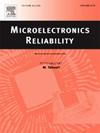Ni, Co, Mn对Sn-X (X= Bi, Ag, Zn, Cu)钎料合金最新进展的影响
IF 1.9
4区 工程技术
Q3 ENGINEERING, ELECTRICAL & ELECTRONIC
引用次数: 0
摘要
微电子和电子组件的进步加速了对先进的无铅焊料材料的需求,这些材料旨在满足特定的工业需求。电子、航空电子、船舶、航空航天和汽车等行业都需要具有更高机械完整性、热稳定性和电气可靠性的焊料合金。无铅焊料组合物的不断涌现,重点是优化其微观结构和性能特征,以满足现代应用的严格要求。本文全面研究了镍(Ni)、钴(Co)和锰(Mn)合金在SnBi、SnAg、SnZn和SnCu焊料系统中的影响,重点研究了它们对微观组织细化、机械增强、润湿性增强、熔化行为、电导率和导热性、电迁移电阻和缓蚀性的影响。添加Ni可以细化金属间化合物(IMC)的结构,减少IMC的过度生长,从而提高接头的耐久性和抗蠕变能力,并调节表面形貌。Co有助于提高焊点的显微组织稳定性和热稳定性,优化焊点的机械坚固性。Mn以其抗氧化性能而闻名,提高了耐腐蚀性,减少了界面空隙,改善了IMC的形态。这篇综述强调了Ni, Co和Mn作为无铅焊料发展的关键添加剂元素的潜力。它们的可控添加可以大大增强焊料系统的热、电气和机械特性,使其更适合下一代电子和电气应用。本文章由计算机程序翻译,如有差异,请以英文原文为准。
Effect of Ni, Co, and Mn for the recent advancements and progress of Sn-X (X= Bi, Ag, Zn & Cu) solder alloys: A review
Advancements in microelectronics and electronic assemblies have accelerated the need for advanced Pb-free solder materials designed to fulfill specific industry needs. The sectors such as electronics, avionics, marine, aerospace, and automotive industries seek solder alloys with enhanced mechanical integrity, thermal stability, and electrical reliability. The continuous emergence of Lead-free solders compositions focuses on optimizing their microstructure and performance characteristics to fulfill the stringent demands of modern applications. This review comprehensively examines the influence of nickel (Ni), cobalt (Co), and manganese (Mn) alloying in Sn![]() Bi, Sn
Bi, Sn![]() Ag, Sn
Ag, Sn![]() Zn and Sn
Zn and Sn![]() Cu solder systems focusing on their impacts on microstructural refinement, mechanical reinforcement, wettability enhancement, melting behavior, electrical and thermal conductivity, electromigration resistance and corrosion mitigation. The added Ni has been observed to refine intermetallic compound (IMC) structure and reduce excessive IMC growth thereby improving joint durability and creep resistance, also regulating surface morphology. The Co contributes to microstructural stability and thermal stability optimizing the mechanical robustness of solder joints. The Mn known for their oxidation resistance property improves corrosion resistance reduces interfacial voiding and refines IMC morphology. This review highlights the potential of Ni, Co, and Mn as key additive elements in Lead-free solder development. Their controlled addition can considerably strengthen the thermal, electrical and mechanical characteristics of solder systems, making them better suited for next-generation electronic and electrical applications.
Cu solder systems focusing on their impacts on microstructural refinement, mechanical reinforcement, wettability enhancement, melting behavior, electrical and thermal conductivity, electromigration resistance and corrosion mitigation. The added Ni has been observed to refine intermetallic compound (IMC) structure and reduce excessive IMC growth thereby improving joint durability and creep resistance, also regulating surface morphology. The Co contributes to microstructural stability and thermal stability optimizing the mechanical robustness of solder joints. The Mn known for their oxidation resistance property improves corrosion resistance reduces interfacial voiding and refines IMC morphology. This review highlights the potential of Ni, Co, and Mn as key additive elements in Lead-free solder development. Their controlled addition can considerably strengthen the thermal, electrical and mechanical characteristics of solder systems, making them better suited for next-generation electronic and electrical applications.
求助全文
通过发布文献求助,成功后即可免费获取论文全文。
去求助
来源期刊

Microelectronics Reliability
工程技术-工程:电子与电气
CiteScore
3.30
自引率
12.50%
发文量
342
审稿时长
68 days
期刊介绍:
Microelectronics Reliability, is dedicated to disseminating the latest research results and related information on the reliability of microelectronic devices, circuits and systems, from materials, process and manufacturing, to design, testing and operation. The coverage of the journal includes the following topics: measurement, understanding and analysis; evaluation and prediction; modelling and simulation; methodologies and mitigation. Papers which combine reliability with other important areas of microelectronics engineering, such as design, fabrication, integration, testing, and field operation will also be welcome, and practical papers reporting case studies in the field and specific application domains are particularly encouraged.
Most accepted papers will be published as Research Papers, describing significant advances and completed work. Papers reviewing important developing topics of general interest may be accepted for publication as Review Papers. Urgent communications of a more preliminary nature and short reports on completed practical work of current interest may be considered for publication as Research Notes. All contributions are subject to peer review by leading experts in the field.
 求助内容:
求助内容: 应助结果提醒方式:
应助结果提醒方式:


